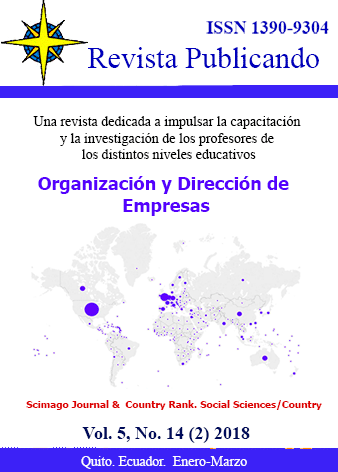Resumen
In this study, the climate conditions of Iran in the decades 2000, 2025, 2050, 2075 and 2100 were modeled using the output of two general models of atmospheric HadCM2 and ECHAM4 and with consideration of 18 IPCC emission scenarios. The MAGICC-SCENGEN model was used for microscopic analysis of low-power data from general circulation models. In this research, the results of two models of HadCM2 and ECHAM4 have been reviewed and compared. Based on this, the results of the HadCM2 model indicate that Iran's precipitation has fallen by 2.5 percent by the 2100s, while for the same period in the ECHAM4 model, our rainfall has increased by 19.8 percent. Regional analysis of the results of the HadCM2 model shows that in the coming decades, the provinces of Mazandaran, Golestan, North Khorasan, North Khorasan Razavi and Semnan, Tehran, and parts of Guilan and Qazvin will increase precipitation, while the ECHAM4 model predicts precipitation reduction has done for these areas.. Also, the HadCM2 model for southeastern regions of our country, including the provinces of Hormozgan, Kerman, Bushehr, southern Fars, and parts of Sistan and Baluchestan, has predicted a decrease in precipitation, but in the ECHAM4 model, these areas will increase in precipitation during the same period. Based on the studies, the results of both models indicate an increase in temperature in all of our provinces in the coming decades. The two models predict the average temperature rise of 3 to 6.3 degrees Celsius for our country by the 2100s, which in these two models the spatial distribution of temperature rise, is consistent.
Referencias
Babaeian, I. Najafi Nik, Z., 2006, Introducing and Evaluation of LARS-WG Model for Modelling Meteorological Parameters of Khorasan Province (1961-2003), NIVAR.No. 62, 63-Autumn 2006 & Winter 2007, pp. 50-64.
Babaeian, I., Kwon, W.T., and Im, E.S., 2004, Application of Weather Generator Technique for Climate Change Assessment Over Korea, Korea Meteorological Research Institute, Climate Research lab., pp. 98.
Covey, C., AchutaRao, K.M., Cubasch, U., Jones, P.D., Lambert, S.J., Mann. M.E., Phillips, T.J. and Taylor, K.E ., 2003, An Overview of Results from the Coupled Model Intercomparison Project (CMIP), Global and Planetary Change 37, 103–133.
Habibi, M. et al., 2008, Climate Modeling and Clamate Change of IRAN, Final ProjectClimatological Research Institute (CRI).
Harvey, L.D.D., Gregory, J., Hoffert, M., Jain, A., Lal, M., Leemans, R., Raper, S.B.C., Wigley, T.M.L .and de Wolde, J., 1997, An introduction to Simple Climate models used in the
IPCC Second Assessment Report: IPCC Technical Paper 2 (eds J.T. Houghton , L.G. Meira Filho, D.J. Griggs and M. Noguer), Intergovernmental Panel on Climate Change, Geneva, Switzerland, pp. 50.
Houghton, J.T., Meira Filho, L.G., Callander, B.A., Harris, N., Kattenberg A. and Maskell K., eds, 1996, Climate Change 1995: The Science of Climate Change, Cambridge University Press, New York, pp. 572.
Hulme, M., Wigley, T.M.L., Barrow, E.M., Raper, S.C.B., Centella, A., Smith, S.J. and Chipanshi, A.C., 2000, Using a Climate Scenario Generator for Vulnerability and Adaptation Assessments, MAGICC and SCENGEN Version 2.4 Workbook. Climatic Research Unit, Norwich UK, pp. 52.
Kattenberg, A., Giorgi, F. Grassl H., Meehl, G.A., Mitchell J.F.B., Stouffer, R.J., Tokioka, T., Weaver, A.J. and Wigley, T.M.L., 1996, Climate Models, Projections of Future Climate. (In) Climate Change 1995: The Science of Climate Change (eds J.T. Houghton, L.G. Meira Filho, B.A. Callander, N. Harris, A. Kattenberg and K. Maskell), Cambridge University Press, New York, 285.357.
Lazar, B. and Williams, M., 2008, Climate Change in Western Ski Areas: Potential Changes in the Timing of Wet Avalanches and Snow Quality for the Aspen Ski area in the years 2030 and 2100, Cold Regions Science and Technology 51, 219-228.
Raper, S.C.B., Wigley, T.M.L. and Warrick, R.A., 1996, Global Sea Level Rise: Past and Future, (In) Sea-Level Rise and Coastal Subsidence: Causes, Consequences and Strategies (eds. J. Milliman and B.U. Haq), Kluwer Academic Publishers, Dordrecht, The Netherlands, 11–45.
Santer, B.D., Wigley, T.M.L., Schlesinger, M.E. and Mitchell, J.F.B., 1990, Developing Climate Scenarios from Equilibrium GCM Results, Max-Planck-Institut fí¼r Meteorologie Report No. 47, Hamburg, Germany, pp. 29.
Schimel, D.S., Grubb, M., Joos, F., Kaufmann, R.K., Moss, R., Ogana, W., Richels, R., and Wigley, T.M.L., 1997, Stabilization of Atmospheric Greenhouse Gases: Physical, Biological and Socio-economic Implications, IPCC Technical Paper 3 (eds. J.T. Houghton, L.G. Meira Filho, D.J. Griggs, M. Noguer), Intergovernmental Panel on Climate Change, Geneva, Switzerland, pp. 52.
Semenov, M.A., and Barrow, E.M, 2002, LARS-WG a Stochastic Weather Generator for use in Climate Impact Studies, User”™s manual, Version3.0.
Usted es libre de:
Compartir — copiar y redistribuir el material en cualquier medio o formato
Adaptar — remezclar, transformar y construir a partir del material
La licenciante no puede revocar estas libertades en tanto usted siga los términos de la licencia
Bajo los siguientes términos:
Atribución — Usted debe dar crédito de manera adecuada, brindar un enlace a la licencia, e indicar si se han realizado cambios. Puede hacerlo en cualquier forma razonable, pero no de forma tal que sugiera que usted o su uso tienen el apoyo de la licenciante.
NoComercial — Usted no puede hacer uso del material con propósitos comerciales.
CompartirIgual — Si remezcla, transforma o crea a partir del material, debe distribuir su contribución bajo la lamisma licencia del original.
